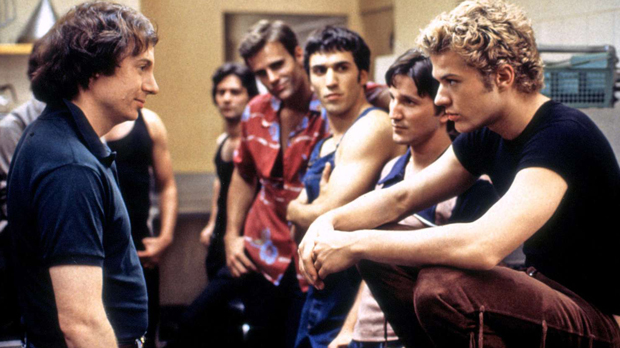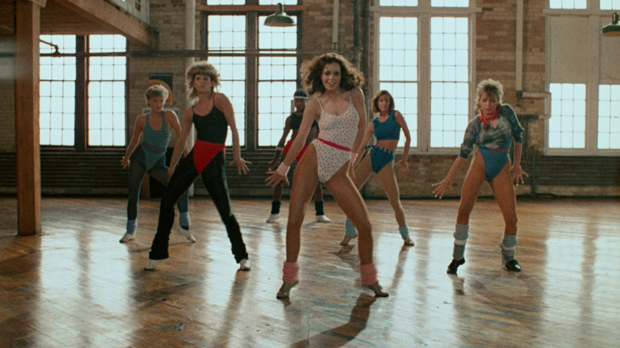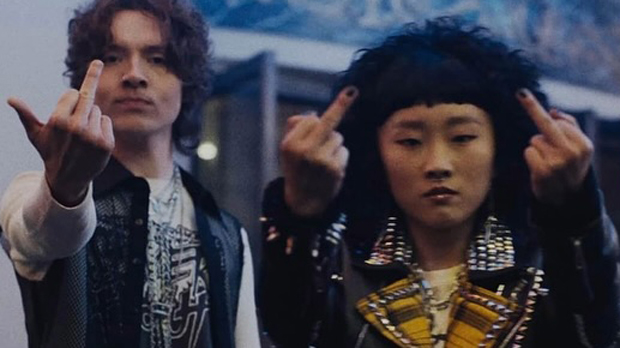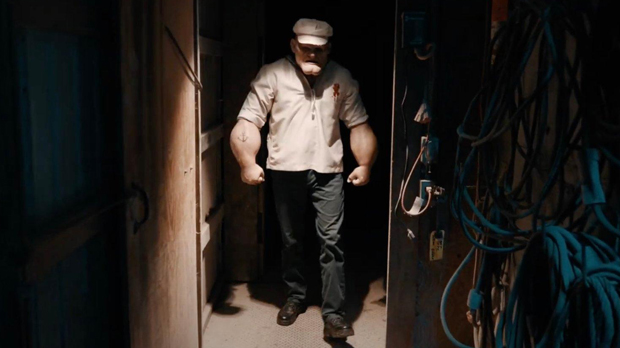 The Big Town (1987) Columbia/Drama RT: 109 minutes Rated R (sexual content, nudity, gambling, some violence, language and racial epithets) Director: Ben Bolt Screenplay: Clark Howard and Robert Roy Pool Music: Michael Melvoin Cinematography: Ralf D. Bode Release date: September 25, 1987 (US) Cast: Matt Dillon, Diane Lane, Tommy Lee Jones, Bruce Dern, Lee Grant, Tom Skerritt, Suzy Amis, David Marshall Grant, Cherry Jones, Del Close, Don Francks, Sarah Polley, Gary Farmer. Box Office: $1.7M (US)
The Big Town (1987) Columbia/Drama RT: 109 minutes Rated R (sexual content, nudity, gambling, some violence, language and racial epithets) Director: Ben Bolt Screenplay: Clark Howard and Robert Roy Pool Music: Michael Melvoin Cinematography: Ralf D. Bode Release date: September 25, 1987 (US) Cast: Matt Dillon, Diane Lane, Tommy Lee Jones, Bruce Dern, Lee Grant, Tom Skerritt, Suzy Amis, David Marshall Grant, Cherry Jones, Del Close, Don Francks, Sarah Polley, Gary Farmer. Box Office: $1.7M (US)
Rating: ***
The gambling drama The Big Town had the misfortune to come out a little less than a year after The Color of Money. It invited some unfair comparisons. Of course, the Martin Scorsese-directed sequel to The Hustler is the better film. That’s a given. The Big Town isn’t all that bad despite all the negative reviews. It’s best enjoyed when taken on its own terms.
Directed by one-film wonder Ben Bolt, The Big Town marks the third pairing of Matt Dillon and Diane Lane after the S.E. Hinton adaptations The Outsiders and Rumble Fish. With their teen years behind them, they play a couple of young adults who find themselves involved in a very adult situation.
It’s 1957 and J.C. “Cully” Cullen (Dillon), a crapshooter from a small town in Indiana, comes to the big city (Chicago) to seek his fortune as a professional gambler. He never loses when it comes to craps. It’s like he has some kind of magic touch with the dice. On the recommendation of Hooker (Francks, My Bloody Valentine), his friend and mentor back home, Cully is employed as an “arm” by professional high-rollers Ferguson (Grant, Damien: Omen II) and her blind husband Mr. Edwards (Dern, Coming Home). He’s only to gamble with their money and they take 70% of his winnings.
Cully might be lucky with dice, but his winning streak doesn’t extend too far past the craps table. He’s torn between two women, single mom and aspiring disc jockey Aggie (Amis, The Usual Suspects) and stripper Lorry (Lane). Lorry is married to George Cole (Jones, The Fugitive), a sleazy strip joint owner who runs a high-stakes craps game in the back room. He takes a strong dislike to Cully after he cleans him out one night to the tune of $14,000. Lorry, in true femme fatale style, convinces Cully to aid her in a scheme to financially break her hubby.
In addition, Mr. Edwards wants revenge against the cocky young gambler who threw acid in his face several years before, blinding him for life. What he remembers is that the man has a small tattoo of a heart on his wrist. What are the odds that this man will show up at some point?
As you can see, there’s plenty of drama in The Big Town. It almost seems like too much story to comfortably fit into a running time just under two hours. Bolt manages to pull it off pretty well, but it’s still a little rough around the edges. The movie is completely predictable, totally cliched and formulaic. There aren’t any earth-shattering plot twists, not even the identity of the man Mr. Edwards has been looking for. The ending is a foregone conclusion. It wouldn’t end any other way.
However, it’s a watchable movie because it beautifully recreates the look and feel of 1950s Chicago with its neon signs, brightly lit diners and smoky nightclubs where guys can watch sexy girls dance and strip. The apartment buildings under the L tracks in Chicago’s South Loop look just right. The production design (by Bill Kenney) and the cinematography (by Ralf D. Bode) work together to provide the movie with an authentic look and feel. The score by Michael Melvoin is quite good. The movie also contains songs by popular artists of the time like Ray Charles, Big Joe Turner and Little Willie John. All in all, it’s a good-looking film.
Dillon turns in a decent performance even though he seems to fluctuate between personas. Sometimes he’s like the country mouse in the big city; other times he’s an arrogant and cocky bastard. He doesn’t really care who he has to step on to attain the success to which he feels entitled. Of course, when something backfires, he’s the first one to cry “Foul!” Lane successfully continues her transition from teen angel to adult actress with her performance in The Big Town. She plays a character similar to the one she played in The Cotton Club except Lorry is more of a bad girl than Vera Cicero. Amis is a sympathetic character. That she chose not to marry her daughter’s biological father makes her an outcast around town. When she learns that Cully is seeing Lorry behind her back, you can read several different emotions on her face
The Big Town has a pretty impressive supporting cast that also includes Tom Skerritt (Alien), David Marshall Grant (Air America) and Cherry Jones (24). Yes, that’s a very young Sarah Polley (The Sweet Hereafter, Go) playing Aggie’s daughter. The whole cast delivers good performances
I have to admit that I didn’t like The Big Town the first time I saw it (September 27, 1987), but it’s become a guilty pleasure as I now appreciate the whole film noir look of the movie. It’s a fairly slick production. It’s surprisingly suspenseful each time Cully rolls the dice. You keep waiting for him to lose everything, especially since he always bets his whole wad of cash on the next roll of the dice. If nothing else, this guy has a huge pair of “dice”. You’re on the edge of your seat even though you already know how the picture will turn out in the end.
I don’t understand all the rules of craps, but that doesn’t diminish my enjoyment of The Big Town. It’s actually fairly entertaining when taken on its own terms. It’s like a movie the producers handed off to Dillon after Tom Cruise turned it down. It certainly doesn’t come up “snake eyes” in the way of entertainment; just don’t expect too much from this movie and you might like it.




